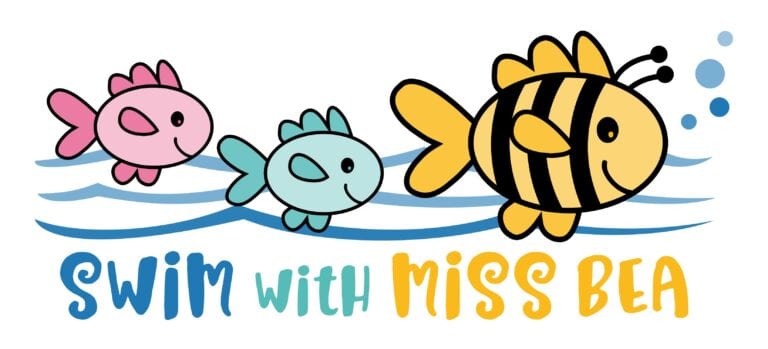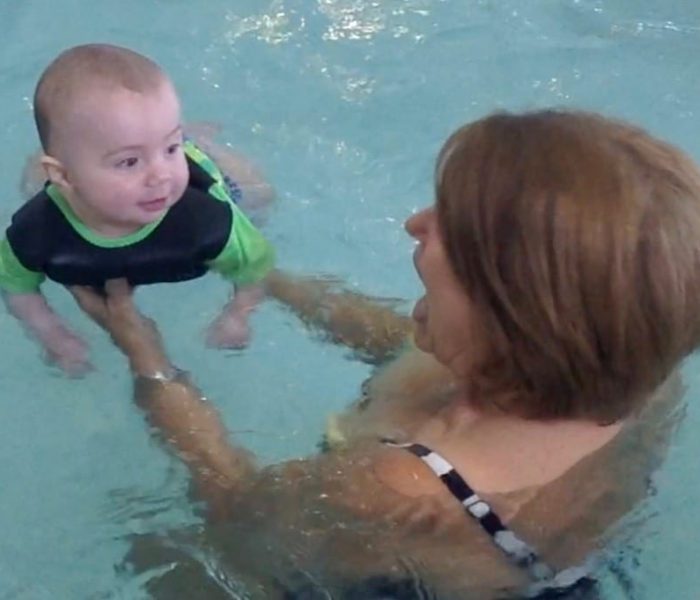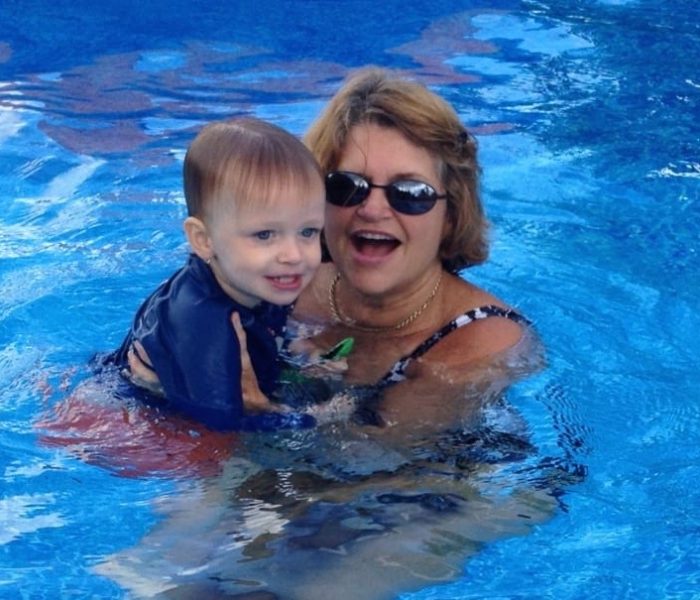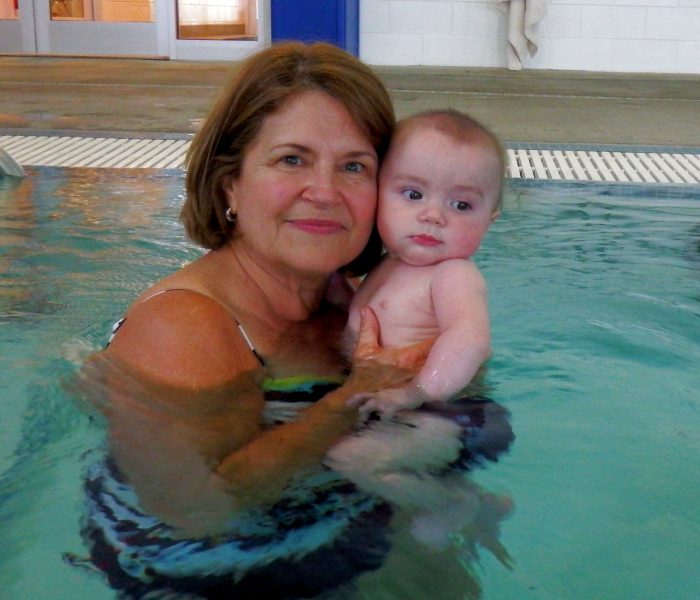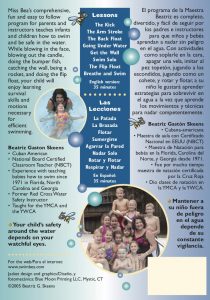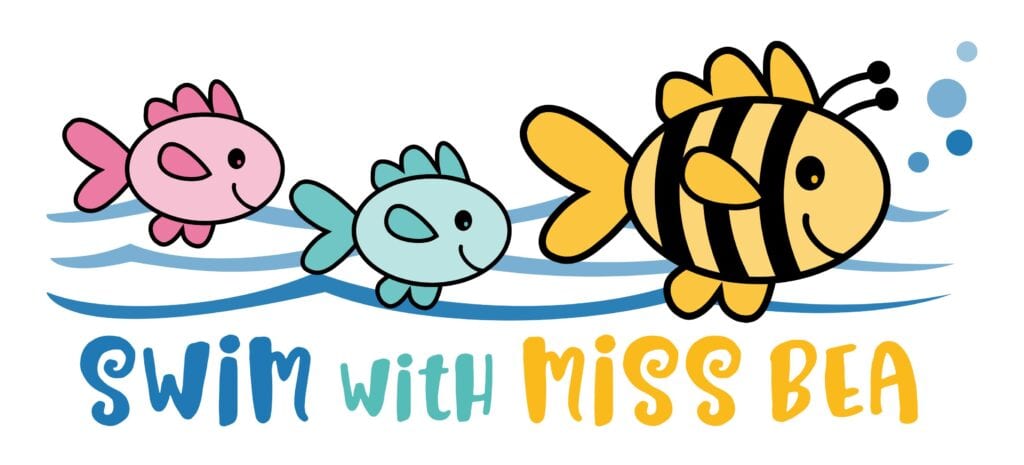Baby Swim Specialist for over 40 years!
Miss Bea
I love teaching swimming! One day a child is frightened of the water and the next day they can do it! It is the best feeling in the world! A person can teach a child to read, play music, and dance ballet, but these are long-term processes that can take years to acquire. My love affair with swimming instruction is the instant gratification factor. It is the smile on the child’s face. It is the excitement, the pride, the surprise of it all. The joy to know that the child’s life is changed forever. And how important to involve the parent, so the parent can share in the child’s success and fun in the water.
I learned about baby swimming first in Florida in the 70’s and started my own program. Then, when teaching high school Spanish in south Georgia, I developed my own progressive swimming/water safety curriculum from infant to 6 years old that is very similar to what is now being used by Swim Specialists everywhere. I feel so strongly that swimming should start from baby’s first baths, that I made a DVD with my strategies and activities featuring 23 parents teaching their own children that is being sold all over the world!.
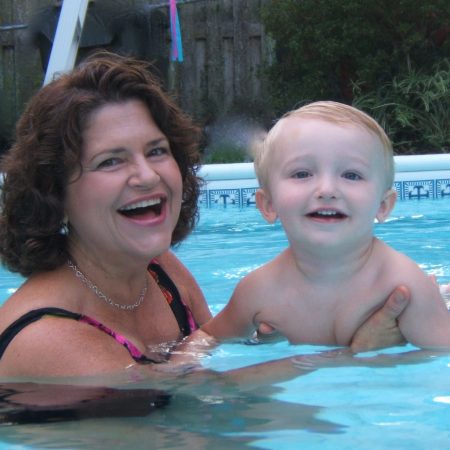
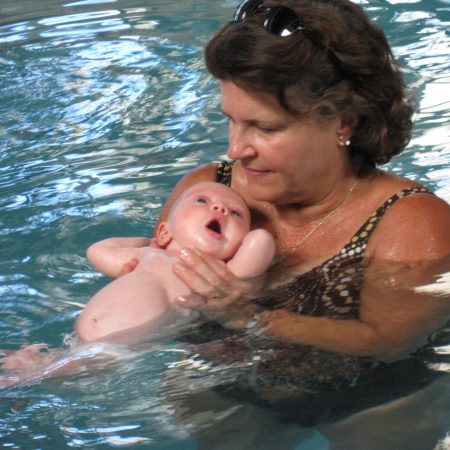

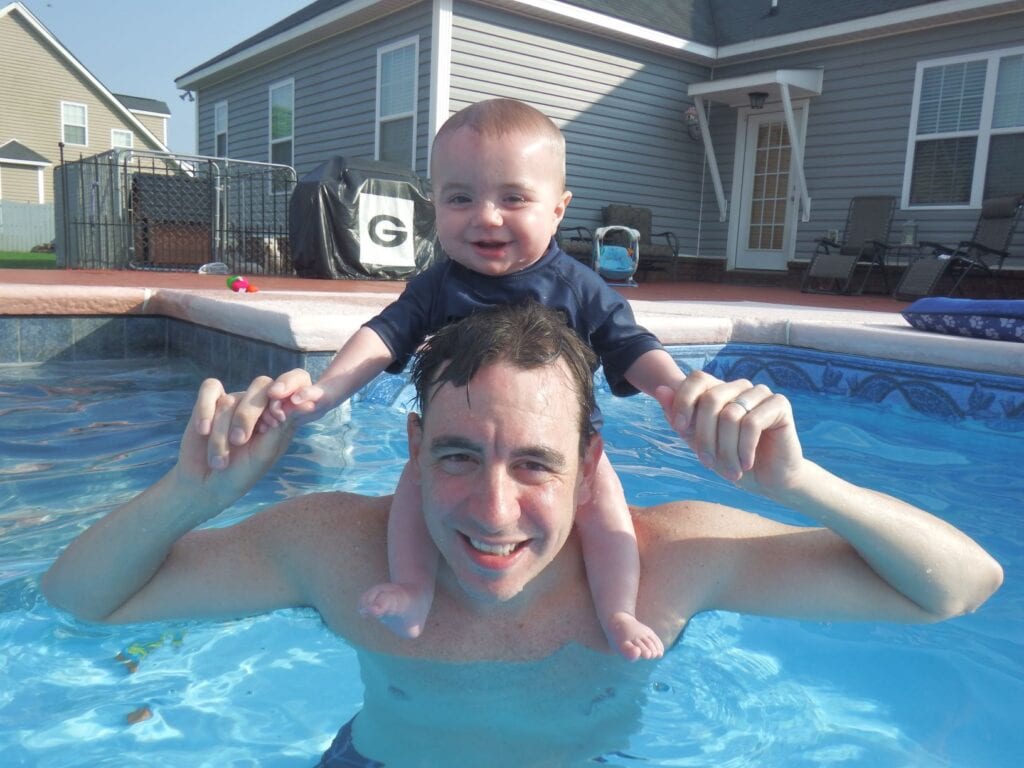
Miss Bea says:
Be the best teacher for your child!
Be amazed!
Be confident!
You can do this
Your child will never forget that you taught her to swim. Never give up!!!
Beatriz Gaston Skeens
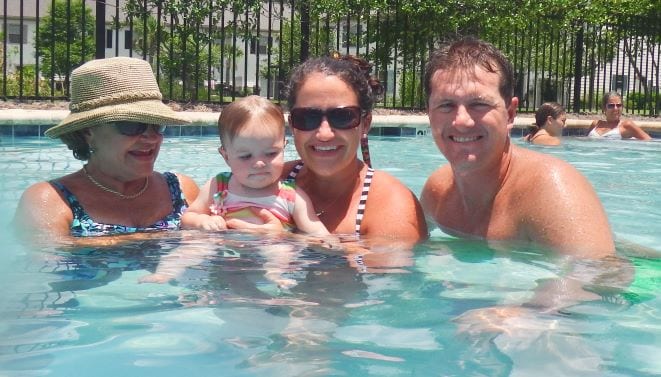
The hundreds of parents I have coached gain confidence and great joy while they become the primary teachers of their infants and children in steps that lead to comfort, enjoyment and safety in the water.
- In 2005 and 2015 Miss Bea published the entertaining, 7 chapter step-by-step swim lesson DVD.
- Learn to Swim with Miss Bea, features parents with their children of varying ages from infant to 6 years old.
- In 2007, Miss Bea presented her baby swim program at the International Conference of The World Aquatic Babies and Children Network in St Petersburg, Florida (WBAC)
- Miss Bea has received numerous awards and commendations. Including the Mom’s Choice Silver Award, honoring excellence in children’s products and the Family Review Center Gold Award, best of 2012.
- In 1975 Miss Bea started her own innovative, independent 2 week baby swim lesson program.
- Miss Bea’s exciting program became known in her community and was sought out by parents committed to teaching their young children how to swim and be safe in a short time, leading them to become proficient swimmers at a very young age.
- Certified Swimming Specialist since 1971
- YMCA and YWCA experience
- Presently Miss Bea continues giving baby swimming lessons, promotes new and innovative gentle baby swim programs through her youtube channel, Facebook, and blog.
- Miss Bea is available to conduct workshops/seminars that train instructors and parents to use her methods in their communities at minimal cost.
Learn More About Miss Bea
Like some of you I have memories of my father throwing me in the water when I was 4 yo on a beautiful summer day at the Havana Yacht Club. He was exasperated by my fear of the water after having several years of swimming lessons. In spite of my indignation, I promptly began to paddle to the side though I was angered and annoyed. I soon relaxed and began playing with my sisters and other children, but have never forgotten the experience. Do I feel that I was scarred for life? Do I hold resentment toward my father? No! But as a swim teacher I tell parents of children under five that if they don’t refresh their child’s skills every few months, the child will forget and the healthy natural fear will take over. They will have to “start over” from summer to summer and if they themselves don’t review with their child up to the level they were at their last water experience or don’t come to swim lessons right away they might have a negative experience in the water and be afraid. Parents shouldn’t throw their child in the water but gently bring them to the point that they were last time. Watching a video of themselves or my video of children performing the swimming skills will also vicariously reinforce their skill and have them ready for their first water experience of the year.
Thirty years ago I taught swimming right here at the YMCA of St. Petersburg. Here I learned to teach babies with the booklet Teach Your Tot to Swim by Pauline Petzel. I have been teaching mostly children under 5 developing my own strategies and games. Because of my early beginnings, I teach my little students to hold their breath and I don’t teach them to take a breath until they can go 8 feet or from one side of the pool to the other. In my teaching I stress propulsion for with a goal of getting to the toy, the caregiver or the side. If they can’t take a breath until they get there, they will work real hard and will continue to improve their stroke until they get there faster. The reward is the achievement itself, but the parent encouragement and incentives are very important.
Six years ago I started recording my students in order to make a research based video that would help other instructors and parents who want to teach their children on their own. Because of time and money restrictions, students come to me for 8 lessons, Monday to Thursday for 2 weeks. Some sign up for 2 more weeks but most have the confidence to continue on their own. I find that there are few detailed “lessons plans” to follow and most of our teachers don’t have the confidence necessary to deal with children and parents in this area. I also made the dvd in Spanish.
I am a Cuban-American, and I lived in Cuba, the beautiful, magical island until 1960, and came to US at 10 years old.
In my heart are hints of fantasies of my childhood: the sweet white sugar cane; the warm brown sugar at my dad’s sugar mill; the bittersweet sounds and smells of killing, cooking and eating a roasted pig; the juicy mangoes in the swimming pool; the sparkling, clear ocean water of Varadero Beach at Abuela’s house; my First Communion; the walk home for lunch with my sisters; the costumes and makeup for the “carnavales”; the birthday party piñatas; and the joyful, family gatherings at my grandparents’ house.
When I was fourteen, we moved to Wisconsin. For my parents, getting used to the snow was as hard as adapting to the American culture. My sisters and I were not allowed to speak Spanish at home. While my father recorded himself speaking to eliminate his accent, my mother would make us laugh saying words like “poodles” for puddles. We celebrated my Quinceañera, but I also had a sweet 16 party. When Cuba was in the news, I researched and reported in my social studies classes, and I memorized Patrick Henry’s speech “Give me Liberty or Give me Death” for the Junior Miss Pageant. I enjoyed some notoriety when the school paper wrote an article about me as the only Cuban-American at my high school when I became an American citizen.
In 1972, I graduated from the University of Florida with a BA-ED, Spanish major. I married a wonderful American man and began my family. I now have three grown-up children and a grandchild you can see in the video. I had no Spanish accent, and very few people even knew I was Cuban. I was totally Americanized. It was only when I became a Spanish teacher at Brunswick High School in 1985 that I discovered an excitement and energy in finding and sharing my hispanidad. I took students on field trips to St. Augustine, Tampa, and Miami. I found some of the magic of Cuba in every country I studied and taught. One year, while teaching a poetry unit, I wrote a bilingual poem, La Bandera, about a lost country searching for the meaning of its flag. I applied for a National Humanities Grant and became a finalist. The same year I won the Georgia International Teacher Fellowship Grant. I studied in Spain and then in Costa Rica with Georgia Southern University. I took students to Spain and Costa Rica. As I traveled by myself and with students, I marveled at the magic of being in the countries that I studied, dreamed about, and taught.
Each child brings with them a unique set of experiences, or backpack, that affect how they behave around the water. As I describe each type I will recommend my findings for efficiently dealing with these children in the water adjustment and complete submersion stage. The children can be divided into 3 types by experience backpack and regardless of age.
The first and most delightful are the children who bring a positive backpack. With these children we just need to use the backpack to our advantaged and to the advantage of the other children. Sometimes other parents in the class see these children and feel bad that their child is not also progressing as fast and will get discouraged or drop out the first day or two, thinking that their child is not ready. It is important to tell the other parents that every child in different. Use the child to show the strategies and techniques or move the child to a more advanced class. If the children in the class are 3 or more, the other children will catch up and gain confidence within a few days.
Forty percent of my first time students come to me with little or no water experience. Even with our new shampoos that don’t hurt the eyes, some parents are still not letting water go on their child’s faces during bath time. Watching my dvd before starting the class is invaluable to this group because the parents and children will come with expectations of what they will be doing even if it will not be exactly the same. Also, many sign up way before the lessons start and the children can practice some of the skills, especially going under water, the most crucial of the skills. Most parents are reluctant to try this themselves, but with the video demonstrations and games, they will try it. If a parent tells me that they don’t have a place to practice, I will encourage them to ask a neighbor or friend who has a pool or community center to let them use it.
Of these first time students, 10 % of the parents have some fear of the water and don’t know how to swim themselves. I have found that this is the most negative of the swim experience since the fear is passed on to the child. Having the other parent do the lessons is the best option. Unfortunately, a parent will not tell you this and it is up to the instructor to find this early on if the child expresses fear or discomfort in the water from the first day.
It is also important to ask the parent if there has been a negative water experience such as falling in the pool or near drowning by the child. Such a child will need more assurance and may not progress if forced.
Most of the first time parents come to lessons saying that their children love the water, some even say, “My child is swimming”. What they don’t tell you is that they are swimming with “swimmies” or are arm bands. They can’t understand why their child won’t go under water and why they are afraid to go near the water without the swimmies. Some of these parents have pools or go to a community pool with older siblings and they have instilled a healthy fear in their children to stay away from the pool without swimmies or special swimsuits and from the deep end. Parents have to explain to their child that now they will learn how to swim and that it is okay.
Parent Questions
Miss Bea says: Start preparing your young baby for swimming every time you give her a bath. It’s good for you and your baby to go to a pool or hot tub that you know is clean and warm. I give you specific examples on how to hold your baby and how to take your baby under water. Gain confidence from watching other parents do it!
Miss Bea says: A 2009 study by the Norwegian University of Science & Technology researched benefits to baby swimming. Baby’s movement in the water helps improve general co-ordination and balance and heart health, and learning to swim with toys will help your little one’s co-ordination and motor skills as well as being a good bonding time with your baby.
Miss Bea says: Research has recently proven that baby swim programs have reduced drowning statistics. But know that there is no way to drown proof your infant. Your child’s safety around the water depends on your watchful eyes! Look for baby swimming programs that use gentle techniques where you are always in the water with your baby. But there are things you can do right now at home that will help your baby survive a fall into the water. Start to teach your baby my easy technique for not swallowing water while in the bath. A child can hold his breath under water for around 2 minutes, giving you time to get your child out of the water should he fall in the pool.
Miss Bea says: In my new Swim Lesson DVD I show a mom in the bathtub with a 3 month old floating on her back and I show how she supports her baby on her belly and has the baby push off the end of the tub. Also, pouring water on the face of the baby so that the baby learns to not react with panic and swallow water when she goes under the water.
Miss Bea says: Make everything a game. Make deals with her where she can earn prizes! Have her watch my DVD so she sees children having fun swimming. Next, have her just sit and put her feet in the pool watching other kids playing. Show her fun pictures and videos of herself and friends in the pool from other years. Practice with her favorite toy in the bathtub and shower putting her face under water. Next time, in the pool, she goes in the shallow part with you sitting right next to you. Soon, she will be asking for more – and more treats, of course!
Miss Bea says: All the pool arm floats, swim rings and tubes are fun and can be used to help the child with the swimming skills. But don’t make the child put on a flotation device as soon as you get to the pool or the child will become dependent on the float. You want your child to become independent and safe in the water.
Miss Bea says: Yes, because I give you step by step swimming instructions where you can see parents performing with their children. Also little Ashley will enjoy watching the children in the water and try to imitate them.
Miss Bea says: If your child is prone to outer ear infections (swimmer’s ear), you can put “swim ear” drops that can be bought at the drug store to help evaporate any moisture in the ear, or buy an ear protection band.
Miss Bea says: The American Academy of Pediatrics recommends not to take babies to a pool before 6 months. That is due to the germs he can pick up from the water before his immune system is developed. But you can take the baby as soon as the umbilical cord falls off to warm, clean pool. Hold the baby close to you and maintain eye contact. Hold the baby securely if the baby can’t hold his head up since. I show you some holds on my DVD. It’s okay if water gets splashed. Just laugh and have fun!
Miss Bea says: I bet he loves the tub and even puts his face under the water in the tub. So try this in the pool: Hold him close to you count to three and jump up taking a breath then go under the water together for a split second. You spit and blow out and laugh and see if he does the same. Make it a game and stay under the water a little longer each time. As he gets used to being under water you can stay longer and he will be learning to swim. More games like this in my swim lesson DVD.
Miss Bea says: If the child is afraid, take it slow. The child needs to trust you. Are you mixing your signals? Is he going under water without enough warning? The child has no control in the water and he knows it. Are you comfortable and confident with the lesson? Be calm and loving. Ignore the crying and laugh and have fun. Go under water together. Have your child push you or your spouse under the water. If you cannot have a calming relaxing attitude, someone else may have go in the pool with your child. Have friends in the water, maybe a babysitter…
Have Any Questions? Contact Miss Bea!
SwimBea Productions
Learn to Swim With Miss Bea DVD
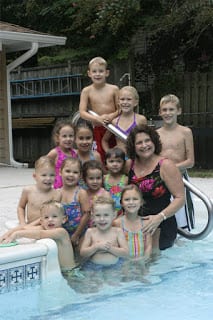
Your child will enjoy watching these children swimming and will do the same.
SwimBea Productions founded in 2005 for the purpose of producing Learn to Swim with Miss Bea, a video for parents and swim instructors to teach babies and young children how to swim. In 2020, a digital version of the DVD was produced in both English and Spanish.
An innovative, revolutionary, swimming lessons approach developed and designed to streamline the learn-to-swim process from start to finish, baby to swimmer, all in a swim lesson DVD.
In summary, this DVD:
- Demonstrates a progression of engaging movements and games for the bath and the pool for each swimming skill from 6 weeks to 6 years old.
- Shows easy step-by-step techniques now used by swim schools globally that YOU can copy yourself with Miss Bea’s guidance.
- Gives you confidence in teaching your child how to swim
- Complements your child’s swimming lessons program.
- Encourages you with activities that relieve your child’s swimming anxiety
- Will help your child to become a happy and safe swimmer.
This unique set of swimming demonstrations makes it easy to organize your own fun swim lessons for your child. There’s no need to spend a fortune on swimming lessons. Use Learn to Swim with Miss Bea DVD as your professional guide.
We began forging this innovative path more than three decades ago, unaware of the international revolution in learn to swim baby programs. As the benefits of baby swimming was being researched, the demand grew, and Aquatic Specialists all over the world were also developing professional-quality baby swimming lesson programs.
With only the resources of her students and their parents, Miss Bea recorded every swimming experience in her classes then studied and organized them to demonstrate, both in English and Spanish, her premium-quality, step-by-step lessons for infants to children 6 years old. The result was an efficient and entertaining 7 chapter DVD, Learn to Swim with Miss Bea (Vamos a Nadar).
This DVD includes seven comprehensive chapters for infants to 6 year old beginners:
- The Kick
- The Arm Stroke
- Going Underwater
- Get the Wall
- Swim Solo
- The Flip Float
- Breathe and Swim
The evolution of baby swimming hasn’t stopped. To provide even more for individual needs, we continue publishing numerous YouTube videos with lively solutions for swimming problems such as going underwater that stimulate astonishing water proficiency for preschoolers. Celebrating 10 years of excellence, a second edition of the DVD was published in 2015 to fulfill individual demand.
This commitment to innovative, solution-driven, integrative parent-child swimming is the essence and core of everything we do to make your time in the pool easier, more efficient, and more enjoyable – every step of the way, every moment of your time in the pool.
Parenting life has enough curves and corners, angles and edges. Trust Miss Bea to keep producing videos with examples of activities and techniques that will last through every important milestone.
